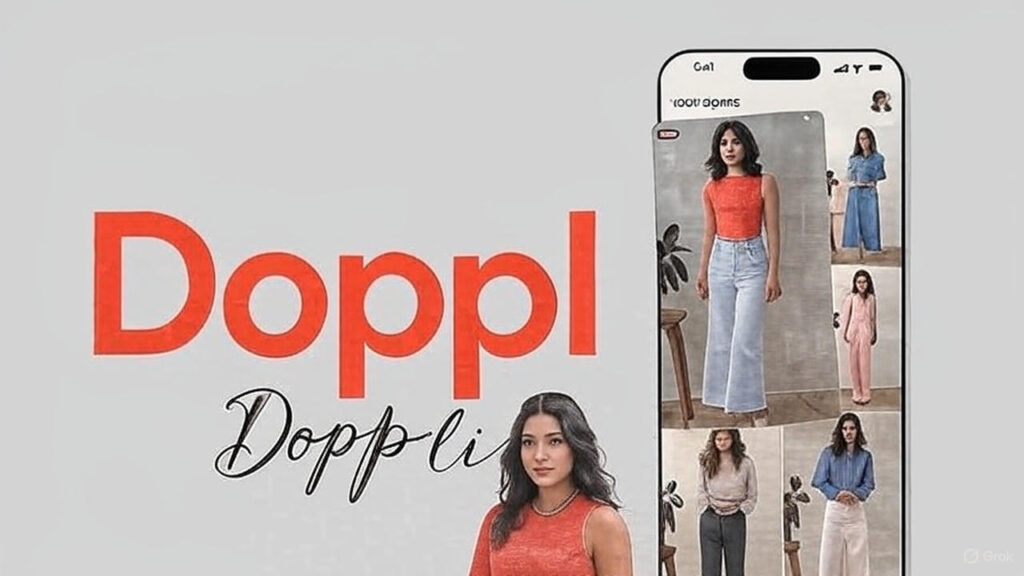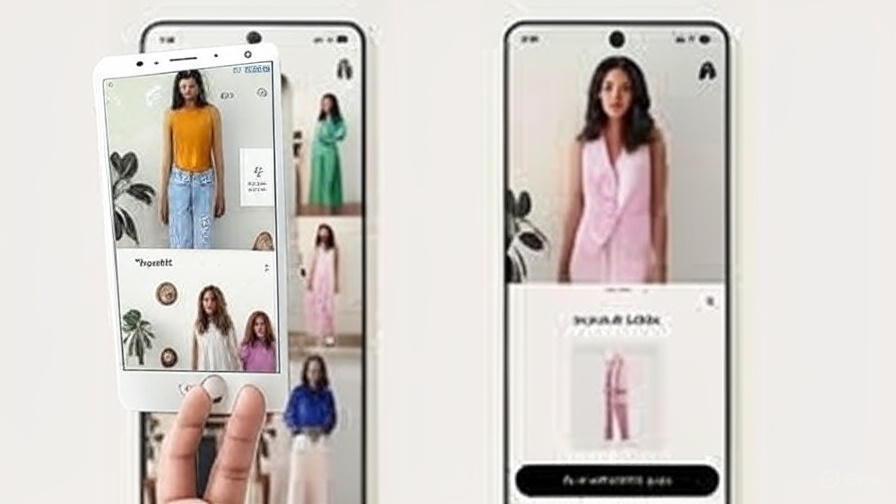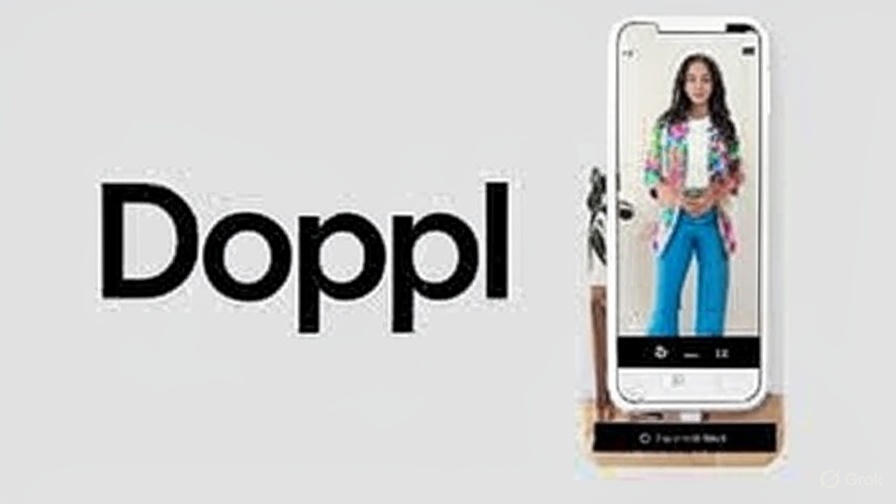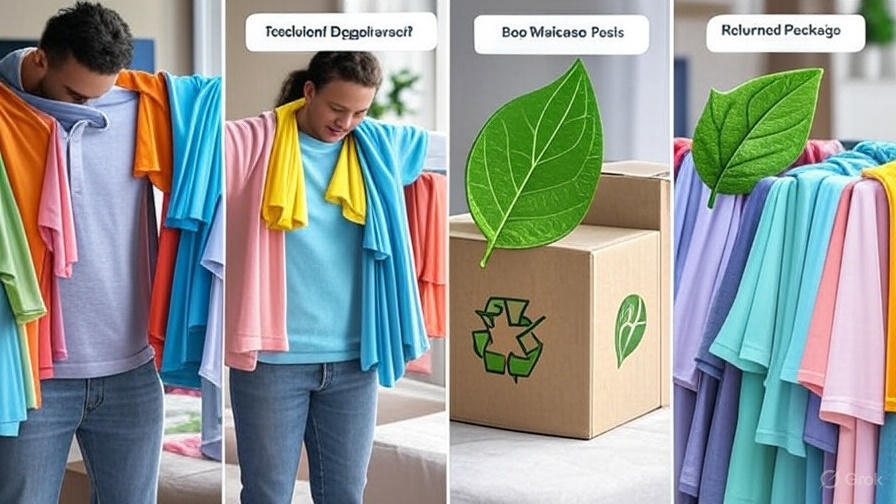Shopping for clothes online is a double-edged sword. The convenience is undeniable, but the inability to try things on leads to a staggering problem: returns. Billions of dollars are lost annually by retailers, and mountains of returned clothing end up in landfills. For shoppers, it’s frustration, wasted time, and shipping fees. Enter Google Doppl, a revolutionary app emerging from Google Labs that aims to banish sizing uncertainty to the past using the power of AI and augmented reality (AR).
Doppl isn’t just another basic virtual try-on filter. It represents a significant leap forward, promising hyper-realistic overlays of clothing items onto your live image or video, tailored to your unique body shape. Imagine confidently knowing how that new jacket will drape or if those jeans will fit before hitting “buy.” That’s the future Doppl is building.

The $1 Trillion Headache: Why We Desperately Need Solutions Like Doppl
The scale of the online fashion return problem is mind-boggling. Industry reports suggest return rates for online apparel can soar as high as 40%, dwarfing the 8-10% typical for brick-and-mortar stores. Why?
- Sizing Inconsistency: A “Medium” from Brand A is a “Large” from Brand B. Charts are confusing and often inaccurate.
- Fit Uncertainty: How will this fabric hang on my body shape? Will it be too tight on the hips? Too long in the arms?
- Fabric & Color Misrepresentation: Photos and screens can distort colors and textures significantly.
- The Hassle Factor: Repackaging, printing labels, trips to the post office – it erodes the joy of shopping.
This isn’t just inconvenient; it’s environmentally damaging (transport emissions, landfill waste) and economically unsustainable for retailers. Solutions have been attempted – basic AR try-ons, detailed size charts, user reviews – but none have fully cracked the code. They often lack realism, require cumbersome manual measurements, or fail to account for diverse body types effectively.

How Google Doppl Works: AI Magic Meets Augmented Reality
So, how does Doppl promise to be different? While Google is still refining the tech, insights from Labs and industry trends reveal the sophisticated layers likely powering it:
- Advanced Computer Vision & Body Mapping: Using just your smartphone camera, Doppl’s AI analyzes your body in real-time. It identifies key points (shoulders, waist, hips, limbs) and creates a dynamic 3D understanding of your unique shape and posture. This goes far beyond simple height/weight estimates. Learn more about the potential of this tech in Google’s research on Google AI Blog – Perception.
- Hyper-Realistic Garment Simulation: Clothing items aren’t just flat images pasted onto you. They are likely complex digital twins with accurate physics properties – understanding how different fabrics (stretchy denim vs. stiff cotton) drape, fold, and move. This simulation adjusts instantly as you turn or move.
- Precise Alignment & Occlusion: The magic is in the details. Doppl aims to ensure clothing aligns perfectly with your body contours. Crucially, it handles “occlusion” – if you raise your arm, the virtual sleeve realistically moves with you, and your real arm convincingly appears over the sleeve fabric, not behind it.
- Personalized Sizing Integration (Potential): Future iterations could integrate with user-provided measurements or past purchase data (with consent) for even more accurate sizing predictions beyond just visual fit.
This combination creates an immersive, realistic try-on experience directly from your phone, requiring no special hardware beyond the camera.

Step-by-Step: Trying On Your Next Outfit with Doppl
Using Doppl is designed to be intuitive:
- Download & Open: Install the Doppl app from the Google Play Store (availability may be limited initially via Google Labs).
- Browse or Search: Explore partner retailer catalogs directly within the app or potentially via integrations (e.g., Google Shopping).
- Select Your Item: Find that perfect jacket or pair of jeans you want to try.
- Initiate Try-On: Tap the “Try Virtually” or “See It On You” button.
- Frame Yourself: Point your smartphone camera at yourself, ideally in a well-lit room with a clear view (using a mirror reflection for easier full-body viewing is a common method).
- See the Magic: Watch as the selected garment instantly appears over your image/video, realistically conforming to your body. Move, turn, bend – see how it moves with you.
- Compare & Decide: Try different sizes or colors instantly. Share looks with friends via the app. When confident, tap through to purchase directly from the retailer.
No changing rooms, no guesswork – just a seamless, confident shopping experience.

Beyond the Wow Factor: Tangible Benefits of Doppl
Doppl’s impact extends far beyond a cool tech demo:
- For Shoppers:
- Unprecedented Confidence: Significantly reduce the anxiety of online clothing purchases. Know it fits before you buy.
- Time & Money Saved: Drastically cut down on returns, saving shipping costs and hassle.
- Enhanced Discovery: Experiment effortlessly with styles, colors, and sizes you might not have risked ordering before. Try entire outfits virtually.
- Accessibility: A boon for people with mobility challenges or those living far from physical stores.
- For Retailers:
- Slash Return Rates: This is the holy grail. Lower return rates directly improve profitability and operational efficiency.
- Boost Conversion & AOV: Confident shoppers are more likely to buy and potentially buy more. Virtual try-ons can increase conversion rates significantly.
- Reduce Environmental Impact: Fewer returns mean fewer shipments, lower carbon emissions, and less waste. This aligns with growing consumer demand for sustainability. Explore the environmental impact of fashion returns on the Ellen MacArthur Foundation website.
- Valuable Data Insights: Understand how customers interact with products virtually (which items are tried on most, which sizes are selected).
- For the Planet:
- Reduced Transportation Emissions: Fewer return shipments mean fewer delivery trucks and planes emitting CO2.
- Less Landfill Waste: Millions of returned garments, often unsellable as new, end up discarded annually. Doppl can help stem this tide.
The Engine Room: The Cutting-Edge Tech Powering Doppl
Doppl sits at the convergence of several rapidly advancing fields:
- Generative AI: While primarily perception-focused now, future versions might use generative AI to create variations of garments or even suggest styles based on body type. The core AI models for body understanding are incredibly sophisticated.
- Computer Vision (CV) Breakthroughs: Google’s expertise in CV, honed through projects like Google Lens and image search, is fundamental. Real-time segmentation (separating you from the background) and pose estimation are critical.
- Advanced AR Frameworks: Building on platforms like ARCore, Doppl pushes the boundaries of mobile AR, requiring high-fidelity rendering and precise real-world anchoring.
- Physics Simulation: Simulating fabric behavior – stretch, shear, drape – realistically in real-time on a mobile device is a monumental computational challenge, likely leveraging optimized physics engines and machine learning approximations.
- Cloud & Edge Computing: Balancing the processing load between the device (for real-time responsiveness) and the cloud (for complex simulations or large model inference) is key. Expect heavy use of Tensor Processing Units (TPUs) on Google’s infrastructure.
This isn’t just an app; it’s a showcase of Google’s prowess in AI, CV, and cloud computing.
Doppl vs. The Competition: Raising the Bar
How does Doppl compare to existing solutions?
- Basic AR Try-Ons (e.g., Snapchat, some retailer apps): Often fun but lack realism. Garments look like stickers pasted on, ignore body contours, have poor physics, and fail occlusion. Doppl aims for photorealism and accurate interaction.
- Manual Measurement Apps: Require users to input numerous measurements (height, weight, bust, waist, hips, inseam, etc.). Cumbersome, prone to error, and static – they don’t show the garment on you, just predict size. Doppl is visual, dynamic, and requires minimal upfront effort.
- 3D Body Scanners (In-store or specialized hardware): Offer high accuracy but require expensive, specialized equipment. Doppl democratizes this level of insight using only a smartphone camera.
- Other AI-Powered Virtual Try-Ons: Several startups (like Zeekit, acquired by Walmart) offer similar concepts. Doppl’s potential advantage lies in Google’s vast AI research resources, integration with Google Shopping/search, and massive Android user base.
Doppl isn’t the first, but its ambition for realism and accessibility, backed by Google’s scale, makes it a potential game-changer.
The Future of Fashion: Where Could Doppl Take Us?
Doppl is just the beginning. Its underlying technology opens doors to transformative possibilities:
- Physical Retail Integration: Imagine using Doppl in-store via your phone or smart glasses – instantly seeing how items look in different colors/sizes without entering a fitting room, or accessing endless virtual inventory.
- Personalized Styling & AI Fashion Assistants: Doppl could evolve into a personal stylist. “Show me tops that go with these virtual jeans,” or “Suggest outfits for a wedding based on my body and what’s in my virtual closet.”
- Customization & Made-to-Order: See how custom-tailored garments would look and fit before they’re even made, bridging the gap to bespoke fashion.
- Social Shopping & Shared Experiences: Virtually try on clothes with friends in real-time, sharing feedback and having fun together remotely. Share your virtual looks on social media.
- Digital Fashion & NFTs: Try on and purchase purely digital clothing items for use in virtual worlds or social media profiles. Doppl could be a gateway to the metaverse fashion economy. Discover emerging trends in digital fashion on Business of Fashion’s Metaverse Hub.
- Democratizing Design: Emerging designers could showcase their collections virtually to a global audience without massive production costs.
Challenges on the Runway: Hurdles for Doppl to Overcome
Despite its promise, Doppl faces significant challenges:
- Technical Perfection: Achieving flawless realism across all body types, poses, lighting conditions, and fabric types is incredibly hard. Glitches (clipping, misalignment) can break immersion. Early Labs feedback will be crucial.
- The Diversity Challenge: Training AI models that perform equally well across the vast spectrum of human body shapes, sizes, skin tones, and hair types is critical. Bias in training data could lead to poor experiences for underrepresented groups. Google must prioritize inclusive development.
- Retailer Adoption & Integration: Doppl needs widespread adoption by major (and minor) retailers. Integrating the tech into their existing product imagery workflows and e-commerce platforms requires effort and resources.
- Privacy Concerns: Using the camera to map bodies raises valid privacy questions. Google must be transparent about data usage (is video processed locally or on servers?), storage, and security. Clear opt-in consent and robust anonymization are non-negotiable.
- The “Feel” Factor: Even a perfect visual simulation can’t replicate the feel of fabric – the texture, weight, and stretch. This tactile element remains a barrier for some purchases.
Conclusion: A Fitting Revolution
Google Doppl represents a pivotal moment in the convergence of fashion, technology, and consumer experience. By harnessing the power of AI and AR to solve the fundamental problem of online clothing fit, it has the potential to reshape how we shop, reduce waste, and boost confidence for millions.
While challenges around technical refinement, inclusivity, privacy, and adoption remain, the vision is compelling. Doppl isn’t just about seeing clothes on a screen; it’s about empowering shoppers, enabling retailers, and moving towards a more sustainable and personalized future for fashion.
As Doppl evolves from its Labs incubation into a more widely available tool, one thing is clear: the days of crossing your fingers and hoping that online order fits might finally be numbered. The fitting room of the future is digital, always open, and fits perfectly – and it’s likely sitting right in your pocket. Keep an eye on Google Labs – the next big step in your shopping journey is being coded right now.